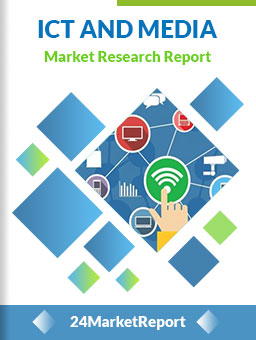
Download FREE Report Sample
Download Free sampleMARKET INSIGHTS
Global Smart Sorting Solutions market size was valued at USD 2.94 billion in 2024 and is projected to grow from USD 3.42 billion in 2025 to USD 8.33 billion by 2032, exhibiting a CAGR of 16.5% during the forecast period.
Smart Sorting Solutions represent advanced automation systems that leverage artificial intelligence, machine learning, and robotics to optimize logistics operations. These solutions enable precise categorization and routing of items across various industries, utilizing technologies like computer vision, IoT sensors, and data analytics. The market encompasses Linear Sorting Systems and Loop Sorting Systems, each designed for specific throughput capacities and space requirements.
The market expansion is driven by escalating e-commerce activities, with global online retail sales surpassing USD 6.3 trillion in 2023, creating unprecedented demand for efficient parcel sorting. Furthermore, labor shortages in logistics—projected to reach 20% vacancy rates in key markets by 2025—are accelerating automation adoption. Recent technological breakthroughs, such as Geek+’s AI-powered sorting robots deployed in 2023 achieving 99.9% accuracy rates, demonstrate the sector’s rapid advancement. Leading players including Daifuku, KION Group, and Siemens are investing heavily in R&D, with the top five companies holding 38% market share as of 2024.
Rising E-Commerce Boom Accelerates Demand for Smart Sorting Solutions
The global e-commerce sector exceeded $6.3 trillion in transactions in 2024, requiring logistics networks to process over 1 billion parcels daily. Smart sorting solutions have become the backbone of fulfillment centers, enabling warehouses to achieve throughput speeds exceeding 20,000 items per hour with 99.9% accuracy. This dramatic efficiency improvement explains why over 78% of major logistics operators now prioritize automated sorting investments. Recent technological breakthroughs in AI-powered vision systems allow sorting equipment to identify and classify items 40% faster than traditional methods, directly addressing the industry's need for hyper-efficient parcel processing.
Labor Shortages and Wage Inflation Drive Automation Adoption
To know more about market statistics, Download a FREE Sample copy
With global logistics operators facing 22-35% annual labor turnover rates and 15-20% wage inflation in key markets, smart sorting solutions provide an essential countermeasure. Automated systems reduce dependence on manual labor while improving productivity metrics by 3-5x compared to traditional sorting methods. In the postal sector, which processes over 450 billion mailpieces annually, automated sorting solutions have proven capable of replacing up to 70% of manual sorting staff while increasing processing capacity. This compelling economic proposition explains why sorting automation projects now deliver ROI within 12-18 months compared to 36-48 months just five years ago.
Major manufacturers are responding to this demand through expanded production capacities and technological innovations:
➤ TGW Logistics recently unveiled its new Stingray shuttle system capable of processing 3,500 items per hour with millimeter-level precision, setting new benchmarks for sorting accuracy.
Furthermore, the integration of IoT sensors and predictive maintenance algorithms has extended equipment uptime to 98.5%, making automated solutions increasingly reliable for mission-critical operations across industries.
MARKET CHALLENGES
High Capital Expenditure Requirements Constrain SME Adoption
While large enterprises rapidly adopt smart sorting solutions, the typical $2-5 million price tag for full-scale implementations creates significant barriers for small and mid-sized operators. Equipment costs represent just 45-55% of total expenditure, with system integration, facility modifications, and workforce training consuming the remainder. This financial hurdle explains why only 12% of companies with under $100 million revenue have implemented advanced sorting automation, compared to 68% of enterprises exceeding $1 billion in sales.
Other Challenges
System Complexity and Integration Challenges
Modern sorting solutions require seamless integration with 8-12 different enterprise systems (WMS, ERP, TMS etc.), creating implementation timelines averaging 9-14 months. The technical complexity of maintaining multi-vendor automation ecosystems leads to 25-30% higher lifecycle costs than initially projected, particularly for organizations lacking in-house engineering teams.
Resistance to Operational Change
Workforce pushback against automation persists in unionized environments, where 42% of sorting facility employees view the technology as a job threat rather than productivity tool. This cultural resistance has delayed or scaled back automation projects in 28% of surveyed organizations across North America and Europe.
Legacy Infrastructure Limits Retrofit Opportunities
Approximately 60% of existing material handling facilities worldwide were designed before 2010 with no provisions for automated sorting, creating substantial physical constraints. Retrofitting older warehouses often requires structural modifications costing 30-45% of new construction expenses while potentially disrupting operations for 6-9 months. This explains why brownfield automation projects average 23% longer ROI periods compared to greenfield installations, discouraging investment in many established logistics hubs.
Additionally, fragmented industry standards across regions complicate global deployments. European systems emphasizing compact modular designs often prove incompatible with North American facilities optimized for different conveyor layouts and package dimensions, forcing customized solutions that increase costs by 18-25%.
Emerging Economies Present Untapped Growth Potential
Asia-Pacific markets outside China represent the fastest-growing opportunity, with projected CAGR of 21-24% through 2032. Countries like India, Vietnam and Indonesia are experiencing e-commerce growth exceeding 35% annually, yet automated sorting penetration remains below 15% of total capacity. Government initiatives like India's $1.2 billion logistics modernization fund are creating favorable conditions for technology adoption, with tax incentives covering 20-25% of automation investments.
The healthcare logistics segment also shows remarkable potential, particularly for temperature-controlled sorting systems. With the global pharmaceutical market exceeding $1.5 trillion, demand for compliant cold-chain sorting solutions is growing at 28% CAGR. New vision-based inspection systems can now verify thermal integrity during sorting while maintaining required temperature thresholds, addressing a critical industry need.
Advances in modular 'plug-and-play' systems are lowering adoption barriers, with some solutions offering 80% faster deployment timelines than traditional installations. This innovation ecosystem suggests the market will continue diversifying beyond traditional parcel and postal applications into sectors like manufacturing returns processing and food logistics.
Linear Sorting Systems Dominate Due to High Efficiency in Large-Scale Logistics Operations
The market is segmented based on type into:
Linear Sorting Systems
Subtypes: Belt-driven, Roller-based, and others
Loop Sorting Systems
Robotic Sorting Systems
Slide Sorters
Others
E-Commerce Segment Leads Market Share Due to Rapid Growth of Online Retail
The market is segmented based on application into:
E-Commerce
Postal and Parcel Services
Medical and Pharmaceutical
Food and Beverage
Others
Logistics & Warehousing Industry Dominates Due to Increasing Automation Needs
The market is segmented by end-user industry into:
Logistics & Warehousing
Retail
Manufacturing
Healthcare
Others
E-Commerce Boom and Automation Drive Intensified Market Competition
The global Smart Sorting Solutions market demonstrates a moderately consolidated competitive landscape, with leading players aggressively expanding their technological capabilities to capitalize on the projected 16.5% CAGR growth through 2032. Daifuku currently dominates the market with a 12.8% revenue share in 2024, leveraging its patented cross-belt sorting technology and strategic partnerships with major e-commerce platforms.
SSI SCHAEFER and KION Group (Dematic) follow closely, collectively holding 18.3% market share. Their dominance stems from comprehensive warehouse automation ecosystems integrating AI-powered sorters with warehouse management systems. Notably, Dematic's FlexSort system achieved a 23% adoption increase in 2024 among parcel handling applications.
The competitive intensity is further heightened by Chinese players like Geek Plus and Wayzim, who are disrupting traditional sorting paradigms with mobile robot-based solutions. These agile innovators captured 7.2% of the Asian market in 2024, particularly in last-mile distribution centers where flexibility outweighs throughput requirements.
Established industrial automation giants Siemens and Mitsubishi Electric are responding with strategic acquisitions - Siemens' 2023 purchase of Intralog gives it access to advanced vision-based sorting algorithms, while Mitsubishi's partnership with Okura aims to combine robotic arms with conventional conveyor systems.
Daifuku Co., Ltd. (Japan)
SSI SCHAEFER (Germany)
KION Group (Dematic) (Germany)
Vanderlande (Netherlands)
BEUMER Group (Germany)
Siemens AG (Germany)
Geek Plus (China)
Interroll Group (Switzerland)
Mitsubishi Electric Corp (Japan)
TGW Logistics Group (Austria)
Emerging competitive strategies focus on modular system architectures, allowing operators to incrementally upgrade existing infrastructure. The recent introduction of hybrid manual-automated workstations by Vanderlande demonstrates this trend, blending human dexterity with machine precision for delicate item handling. Meanwhile, software-defined sorting - exemplified by Fives Intralogistics' Crysta system - enables dynamic reconfiguration of sorting logic without hardware changes, significantly reducing operational downtime during peak seasons.
The global smart sorting solutions market is experiencing a significant transformation, driven by the increasing adoption of automation and artificial intelligence (AI) in logistics and warehousing. With e-commerce sales projected to surpass $7 trillion globally by 2025, logistics providers are under immense pressure to enhance efficiency, reduce operational costs, and minimize errors in order fulfillment. Smart sorting systems equipped with AI-powered computer vision and machine learning algorithms can process parcels at speeds exceeding 10,000 items per hour—far surpassing traditional manual sorting capabilities. Furthermore, integrating IoT sensors with sorting systems has enabled real-time tracking, predictive maintenance, and improved inventory accuracy, further solidifying the demand for these solutions.
Expansion of Cross-Border E-Commerce
The rapid growth of cross-border e-commerce has accelerated investments in smart sorting solutions to handle diverse product categories, regulatory compliance, and multilingual labeling. Countries with well-developed logistics infrastructures, such as the U.S. and Germany, are witnessing a surge in demand for multi-channel sorting systems capable of processing international shipments with varying dimensions and weights. Automated parcel sortation systems now account for over 60% of total logistics investments in major distribution centers, highlighting their critical role in streamlining global supply chains.
Environmental concerns and stringent regulations are pushing manufacturers to develop energy-efficient smart sorting solutions. Latest-generation high-speed sorters consume 30% less power compared to conventional systems while maintaining throughput rates above 15,000 units per hour. Loop sorting systems, which require less floor space and reduce conveyor wear-and-tear, are particularly gaining traction in urban fulfillment centers where sustainability is prioritized. Additionally, recyclable material sorting applications are expanding—fueled by mandates requiring 65% of waste to be processed via automated systems by 2030 in EU nations.
North America
The North American smart sorting solutions market is driven by advanced warehousing needs and e-commerce growth, particularly in the U.S., which accounts for over 70% of regional demand. Major logistics firms and retailers are adopting automated sorting systems to handle increasing parcel volumes, with the U.S. e-commerce sector alone projected to surpass $1.4 trillion in sales by 2025. Regulatory pressures for efficient waste management also boost demand for AI-driven recycling sorting solutions. Key players like Dematic (KION Group) and Intelligrated dominate the market with high-speed parcel sorting systems, while investments in warehouse robotics continue to rise.
Europe
Europe’s market thrives on sustainability mandates and labor cost pressures, particularly in Germany and the UK. The EU’s Circular Economy Action Plan accelerates adoption of smart waste sorting, while parcel volumes exceeding 16 billion annually drive logistics automation. Cross-border e-commerce growth has led to over 35% of sorting system investments being allocated to loop-based solutions. However, strict GDPR compliance for data-driven sorting technologies poses adoption challenges. Leading innovators like Vanderlande and BEUMER Group are expanding AI-powered systems to enhance accuracy in parcel and baggage handling.
Asia-Pacific
As the fastest-growing region, APAC is fueled by China’s $21.35 billion automated sorting sector and India’s booming e-commerce. China’s logistics giants, including Alibaba and JD.com, operate fully automated hubs with over 200,000 parcel sorts per hour. Japan leads in precision sorting for pharmaceuticals, while Southeast Asia sees rising demand for compact modular systems due to space constraints. Cost-sensitive markets still favor linear sorters, but the shift to IoT-enabled loop systems is gaining traction. Local players like Geek+ and Damon Technology compete with global firms through agile, customized solutions.
South America
Market growth in South America is uneven, with Brazil leading due to e-commerce expansion and food processing demands. Automated sorting penetration remains below 15% in logistics, constrained by infrastructure gaps and economic volatility. However, investments in agri-sorting technologies for exports are rising, particularly in Chile and Argentina. The lack of localized service networks for global vendors slows large-scale adoption, though Brazil’s postal modernization projects present opportunities for mid-tier sorting solutions.
Middle East & Africa
The MEA market shows promise with mega-warehouse projects in the UAE and Saudi Arabia, where automated sorting is prioritized for trade hubs like Jebel Ali Port. E-commerce growth at 20% CAGR drives demand, but reliance on imported systems increases costs. South Africa leads in mining-sector ore sorting applications, while North African countries focus on textile and agricultural sorting. Limited technical expertise and high capital expenditure remain barriers, though public-private partnerships are gradually enabling smarter logistics infrastructure.
This market research report offers a holistic overview of global and regional markets for the forecast period 2025–2032. It presents accurate and actionable insights based on a blend of primary and secondary research.
✅ Market Overview
Global and regional market size (historical & forecast)
Growth trends and value/volume projections
✅ Segmentation Analysis
By product type or category
By application or usage area
By end-user industry
By distribution channel (if applicable)
✅ Regional Insights
North America, Europe, Asia-Pacific, Latin America, Middle East & Africa
Country-level data for key markets
✅ Competitive Landscape
Company profiles and market share analysis
Key strategies: M&A, partnerships, expansions
Product portfolio and pricing strategies
✅ Technology & Innovation
Emerging technologies and R&D trends
Automation, digitalization, sustainability initiatives
Impact of AI, IoT, or other disruptors (where applicable)
✅ Market Dynamics
Key drivers supporting market growth
Restraints and potential risk factors
Supply chain trends and challenges
✅ Opportunities & Recommendations
High-growth segments
Investment hotspots
Strategic suggestions for stakeholders
✅ Stakeholder Insights
Target audience includes manufacturers, suppliers, distributors, investors, regulators, and policymakers
-> Key players include Daifuku, SSI SCHAEFER, KION Group (Dematic), Vanderlande, BEUMER, Siemens, Intelligrated, Fives Intralogistics, Murata Machinery, and TGW Group, among others.
-> Key growth drivers include e-commerce expansion, automation in logistics, labor cost reduction, and technological advancements in AI-driven sorting systems.
-> Asia-Pacific leads market growth with China's automated sorting equipment market reaching USD 3.2 billion in 2024, while North America remains a mature market with high adoption rates.
-> Emerging trends include robotics-as-a-service models, computer vision integration, autonomous mobile robots (AMRs), and sustainable packaging sorting solutions.

Speak to our Custom Research Team and get the Custom Research in a budget
Custom ResearchFrequently Asked Questions ?
A license granted to one user. Rules or conditions might be applied for e.g. the use of electric files (PDFs) or printings, depending on product.
A license granted to multiple users.
A license granted to a single business site/establishment.
A license granted to all employees within organisation access to the product.
Upto Working 24 to 48 hrs
Upto 72 hrs max - Weekends and Public Holidays
Online Payments with PayPal and CCavenue
Wire Transfer/Bank Transfer
Hard Copy



 Industry Market Size
Industry Market Size SWOT Analysis
SWOT Analysis Industry Major Players
Industry Major Players Revenue Forecasts
Revenue Forecasts Historical and Forecast Growth
Historical and Forecast Growth Profitability Analysis
Profitability Analysis
























